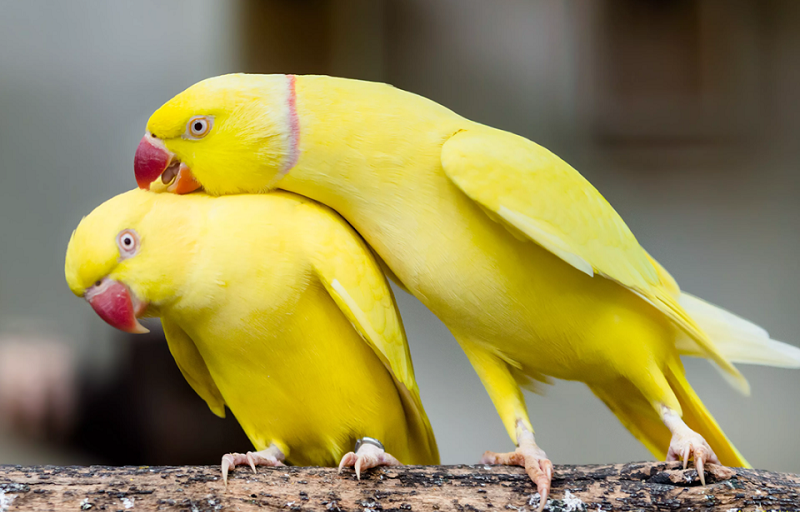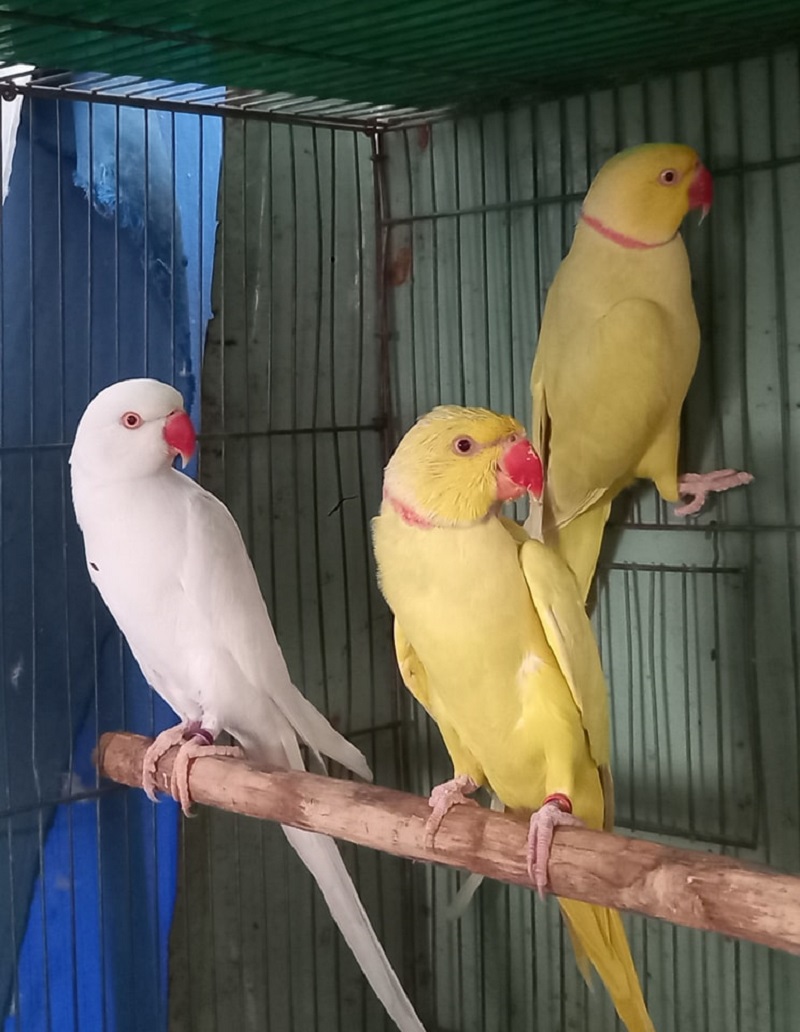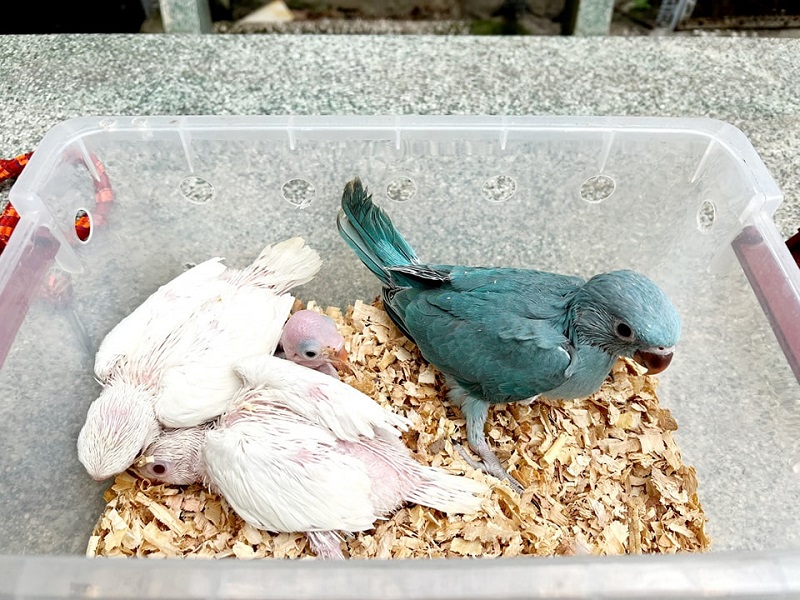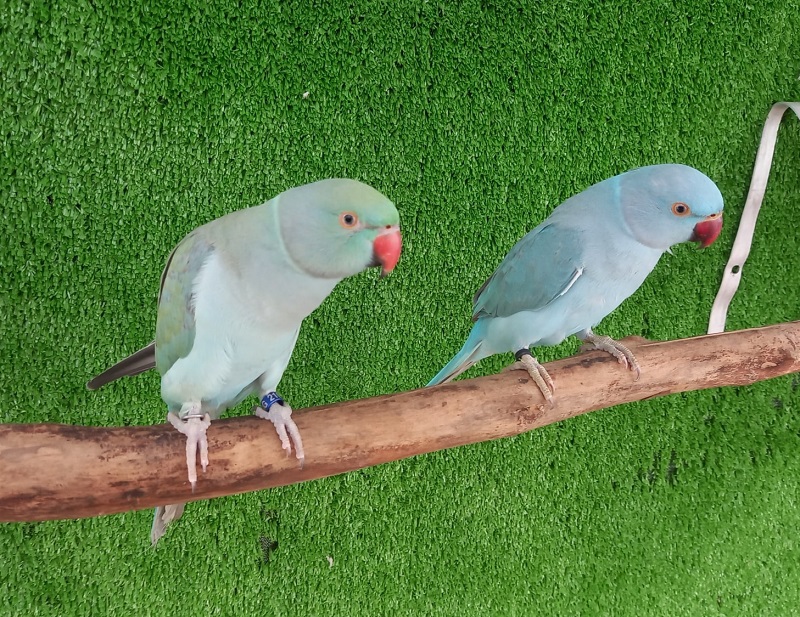Ringneck parrots are also known as pink-necked parrots originating from Sri Lanka (South Asia). In addition, this breed of parrot also appears in Pakistan and India. Ringneck parrots often live in large flocks and on tall, ancient trees.
Let's find out what the characteristics of Ringneck parrots are below!
- Bright, smooth fur colors include: Blue, green, bright yellow, white...
- An adult bird's tail feathers are about 10cm in size, body length is 40cm and weighs 300 - 400g.
- The adult bird's feathers are bright red with colored streaks on the body.
- The male bird has a dark red beak, red around the neck and a striking white outer edge.
- The female has a bright red beak and red streaks around the neck, but is not as prominent as the male. The female's neck streak is brown or gray, not bright red like the male.

With the techniques and ways to raise Ringneck parrots below, you will have beautiful birds with outstanding appearance and intelligence. Please refer below:
Because this breed of parrot is medium in size, you should choose a moderately sized cage. It can be a rectangular or square cage so the bird can fly freely. In addition, you also need to pay attention to preparing enough tools in the cage such as: food trough, water trough, plants... Pay attention to regularly cleaning the cage to help the bird have the best living environment.

What do Ringneck parrots eat? In their natural habitat, they eat many different types of food such as seeds, vegetables, grains, etc. When raising them, you should also build a healthy diet like in the wild to help Ringneck parrots develop best. Foods include: Tomatoes, vegetables, cucumbers, carrots, green beans, lettuce, sprouts, kale... Along with fruits such as peaches, watermelon, dragon fruit, bananas, oranges, tangerines, apples and nuts: millet, sunflower, walnuts, almonds...
Adding protein to Ringneck parrots with chicken, beef, pork... Providing adequate food will help parrots develop stably, improve health and be easy to train.

Taking care of Ringneck parrots is very important, you should give the bird a regular bath once a week. Note, absolutely do not spray water on your body and after bathing, you should dry it to avoid catching a cold. Besides, you should also regularly take your parrot to the vet for regular health checks to help the bird have the best health. In winter, cover the cage with a coat or cloth to prevent the bird from catching a cold.
How long can Ringneck parrots live ? This parrot can live about 40 years in the natural environment or even 60 - 80 years when well raised. When raising your own, your lifespan will be lower than in the wild.
How do Ringneck parrots reproduce ? The breeding season for Ringneck parrots is summer, when the weather is warm, the eggs hatch quickly and develop well. During the breeding season, the female bird lays 2 - 4 eggs, incubates for about 28 - 30 days, then the young chicks will peck their shells to get out. After hatching, baby parrots weigh about 15g and are raised by their parents until they can fly.
What is the personality of the Ringneck parrot ? This breed of parrot is active, intelligent and very agile, but quite noisy. Raising and training Ringneck parrots is simple if they have a good living environment and are provided with enough food.


